The DCB Kessington charitable trust was formed in 2019 under the auspices of the long-established Dunbartonshire Concert Band.
- SCIO registered name: DCB Kessington SCIO
- Charity number: SC049506
- SCIO was registered on: 31 July 2019
- SCIO ‘known as’ name: DCB Kessington
- Address: 58 Milngavie Road, Bearsden, Glasgow G61 2DP
OSCR Charity Details (click here)
Bank details:
- Account name: DCB Kessington SCIO
- Bank of Scotland, sort code: 80-22-60
- Account number: 19486860
Current trustees:
- Robert Baxter – Founder & Artistic Director
- David Broad
- Alan Cooper
How to get here
- Location: Google map
- Buses: 60A/10A/B10/C10 – timetable
- Train: Hillfoot (Bearsden) Station – 0.4mile/10mins
- Tram: no longer in service
- Car: on-street parking
Historical notes
Kessington Burgh Hall was originally an electricity sub-station, built in 1924 to provide power for the Bearsden-Milngavie trams. It became a public hall when the tram service ended in 1956.
Tramway Substation, built 1924. A 1-storey and basement, 3-by-7-bay, red-sandstone rubble building, with turrets on 3 of the 4 corners. Originally housed two 500kw rotary converters to supply the Milngavie tram route, now a public hall.
J R Hume (1976) Industrial Archaeology of Scotland, Vol. 1: The Lowlands and Borders.
Rotary converters were the devices used to convert the high-voltage AC to the 600 volt DC electrical supply that powered the trams via overhead wires.
Further details can be seen at the Historic Environment Scotland/Canmore website.
An earlier image (ca. 1950-ish?, Hidden Glasgow Forum) shows the original building frontage prior to change of use, followed by addition of a front staircase, subsequently modified for ramp access…
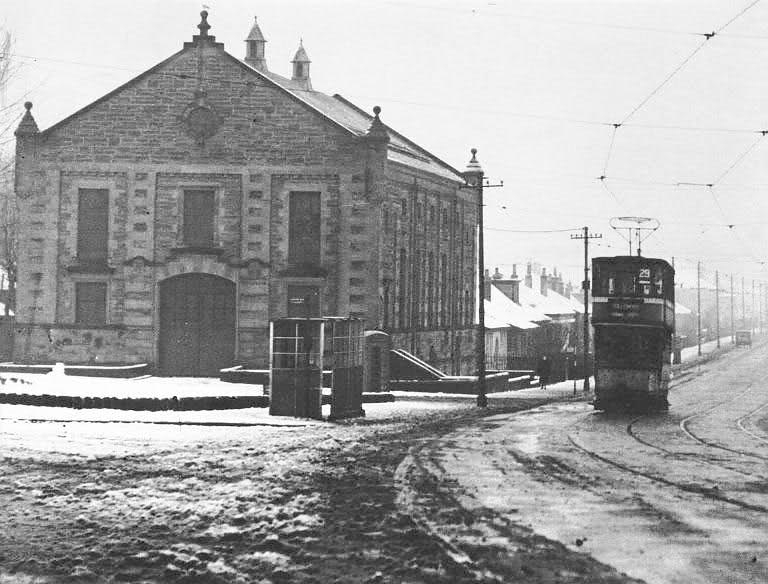
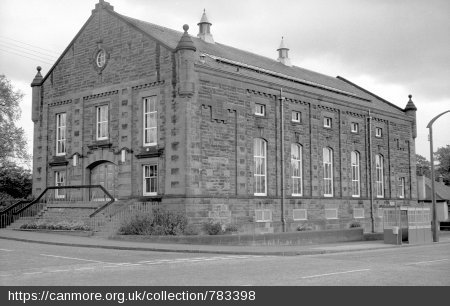
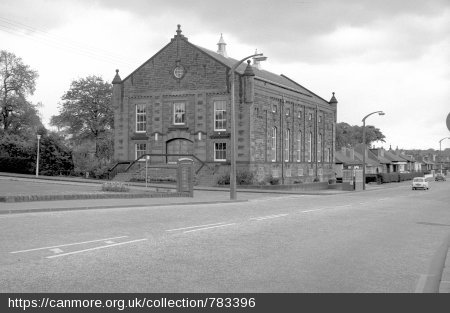

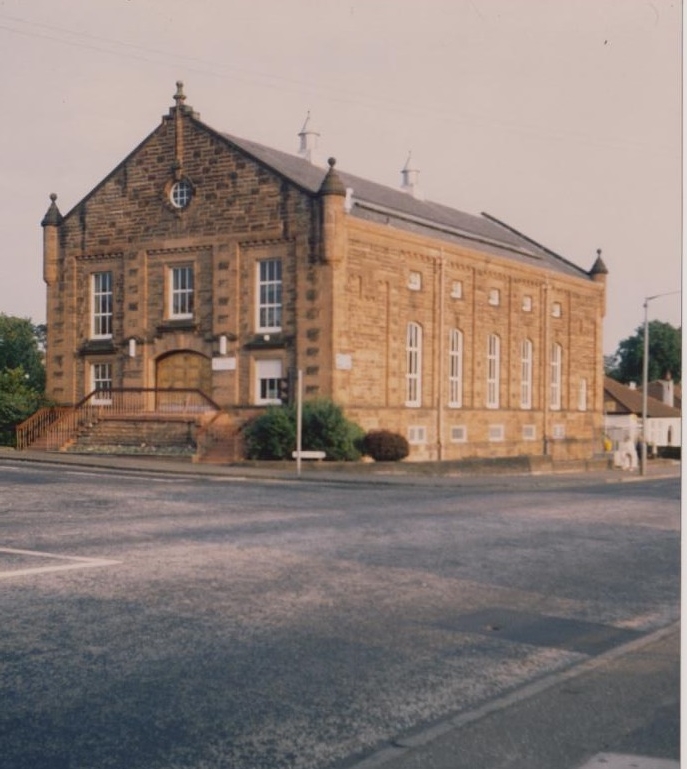
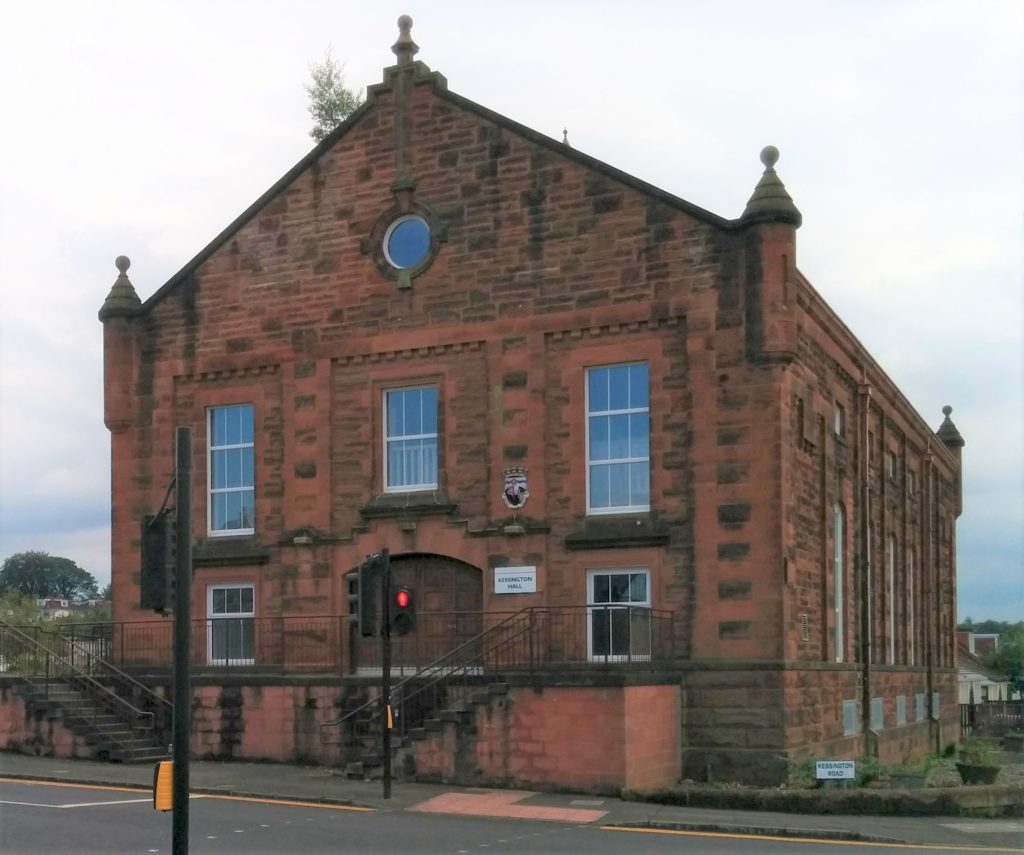
###
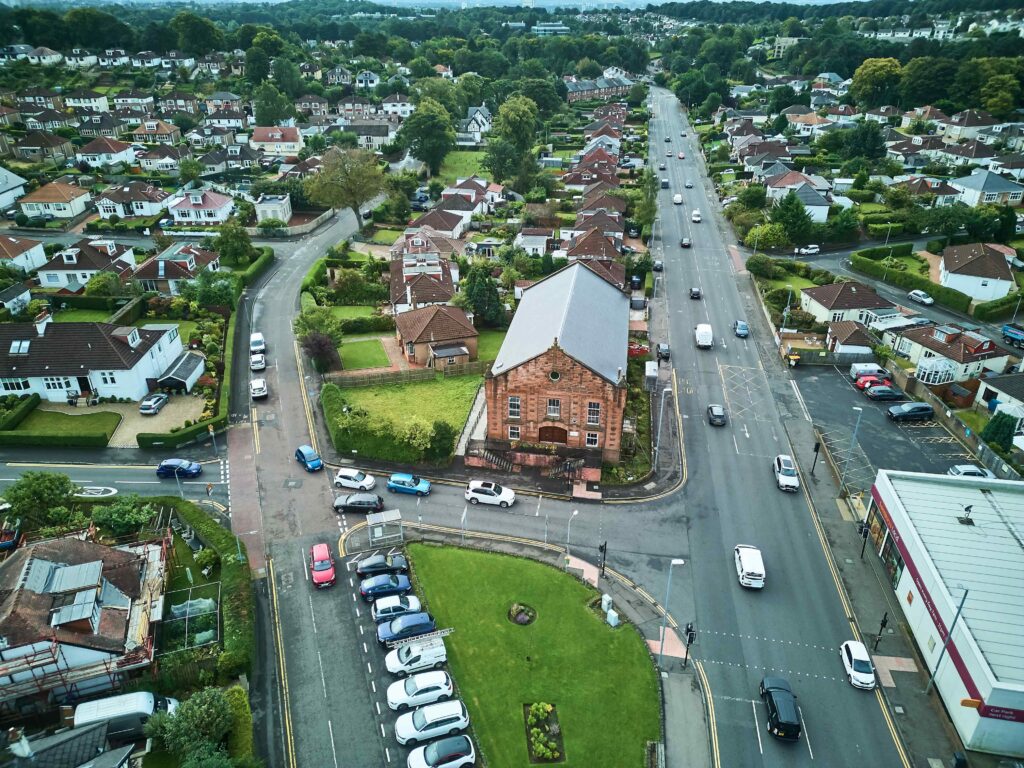
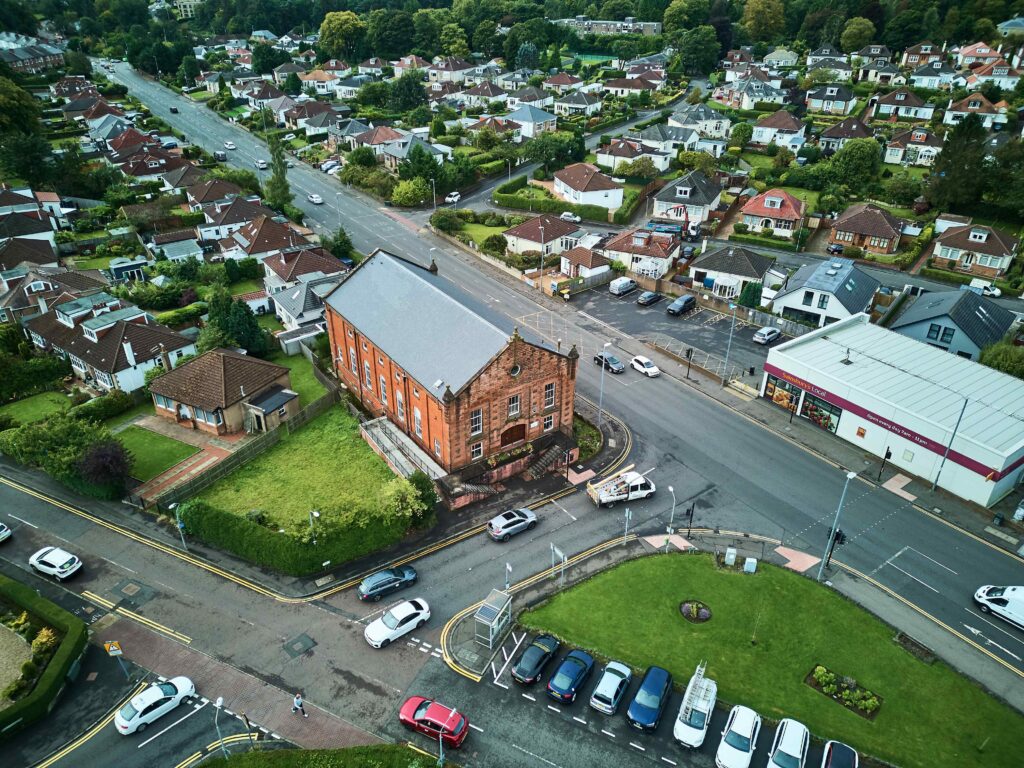
Some views from above
###
The Kessington Tree
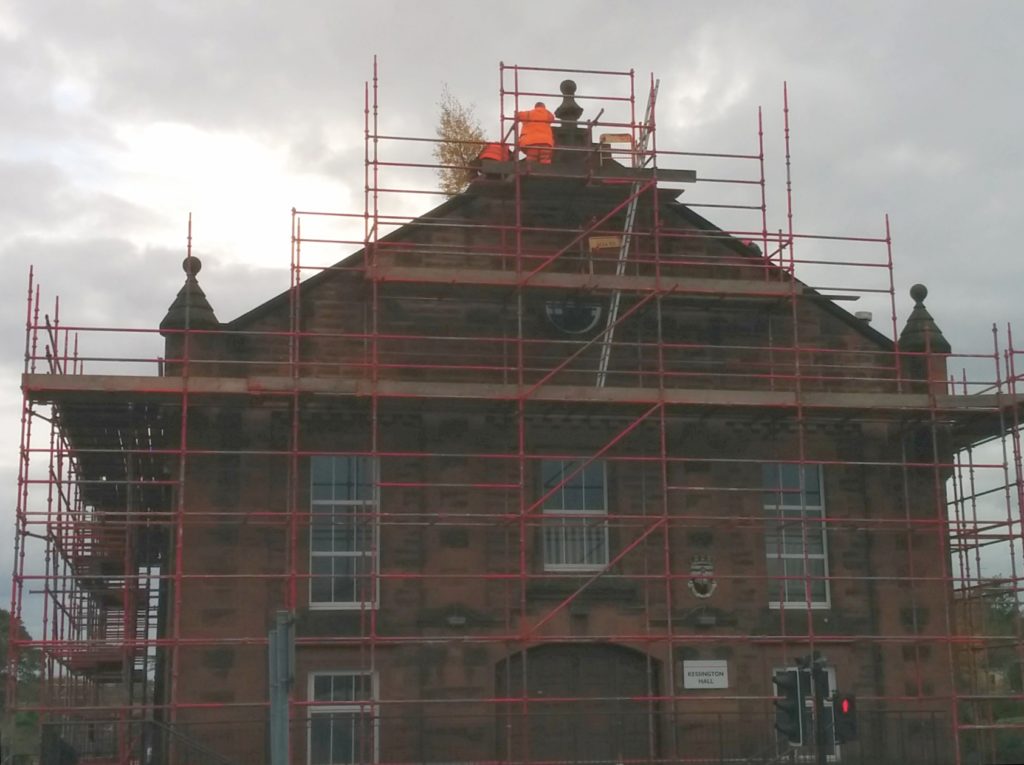
In recent years, prior to refurbishment, a small tree growing on top of the hall had become something of a local landmark – albeit at the expense of the building’s fabric. We had hoped that during re-roofing it might be removed intact for replanting in a more suitable location, but the roots were too entangled with the brickwork.
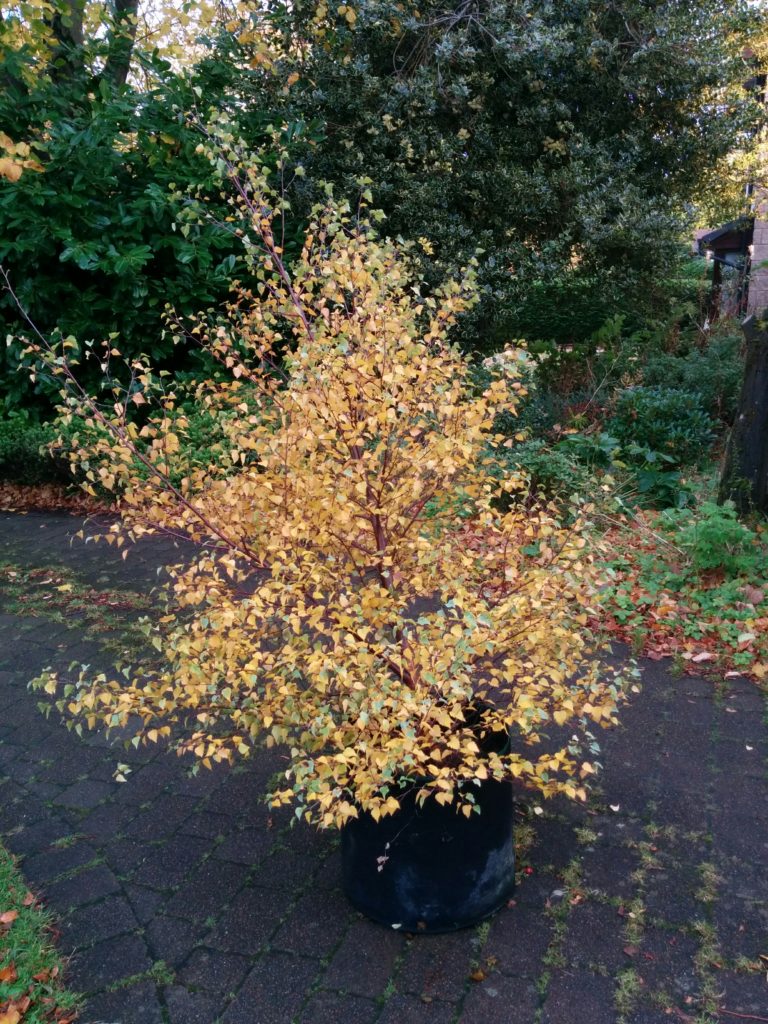
The tree has been tentatively identified as a Chinese Red Birch (betula albosinensis), a non-native species presumably self-seeded from a local garden. We have taken some cuttings for later propagation.
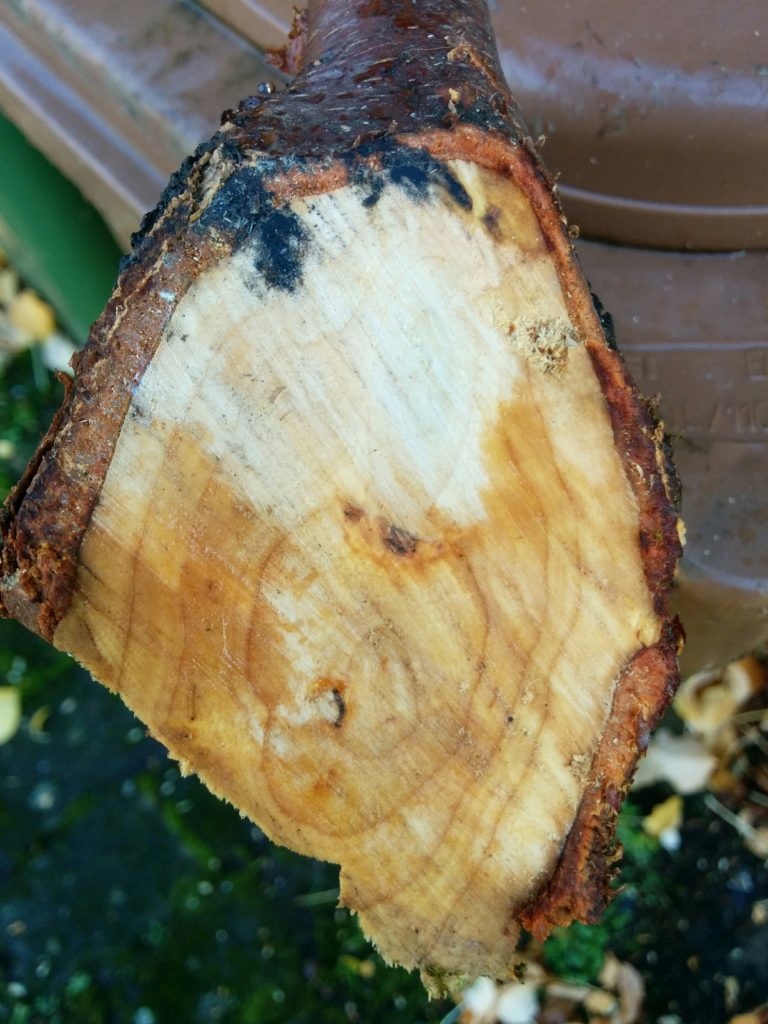
Tree rings at the base of the trunk suggest that the tree was about 5-6 yrs old.



